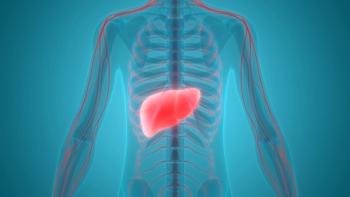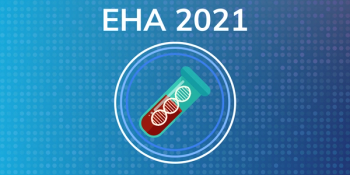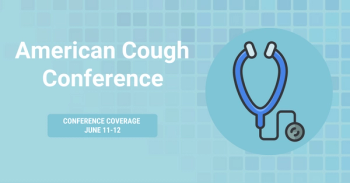
Early responders to the World Trade Center after the 9/11 attacks are associated with a higher likelihood of liver disease, according to a long-term follow-up of responders.

Laura is the vice president of content for The American Journal of Managed Care® (AJMC®) and all its brands, including Population Health, Equity & Outcomes; Evidence-Based Oncology™; and The Center for Biosimilars®. She has been working on AJMC since 2014 and has been with AJMC’s parent company, MJH Life Sciences®, since 2011.
She has an MA in business and economic reporting from New York University. You can connect with Laura on LinkedIn or Twitter.

Early responders to the World Trade Center after the 9/11 attacks are associated with a higher likelihood of liver disease, according to a long-term follow-up of responders.

Using next-generation sequencing (NGS) in clinical workflows may help address disparities in uterine cancer, which has a higher mortality for Black women.

Chemotherapy is standard care for pediatric acute lymphoblastic leukemia (ALL), but new research shows thiopurines can cause mutations that result in relapse.

Multidisciplinary care is an ideal way to management non-alcoholic fatty liver disease (NAFLD) because it is a complex disease associated with numerous comorbidities and necessitating lifestyle changes.

Researchers were able to use a next-generation sequencing assay to not only monitor minimal residual disease (MRD), but also to confirm diagnosis of cutaneous T-cell lymphoma, which can present as more benign conditions early on.

Treatment-related modifications have resulted in improved long-term outcomes for all adolescent and young adult (AYA) survivors of Hodgkin lymphoma, but new research highlights that racial, ethnic, and socioeconomic status disparities persist in the long term.

Patient-reported outcome measures may have a small impact on predicting which patients with cirrhosis will be readmitted to the hospital.

Long-term survival trends among adolescents and young adults (AYAs) with the cancer types with the highest mortality highlight areas where additional research is needed.

A new report is issuing a call to action to develop a global strategy to address the growing issue of nonalcoholic fatty liver disease (NAFLD) and nonalcoholic steatohepatitis (NASH).

Speakers at the Advanced Topics for Oncology Pharmacy Professionals Summit discussed financial toxicity in health care, how it particularly impacts patients with cancer, and how to address the issue with patients and the health system.

Dynamic measurable residual disease (MRD) can be used to optimize postremission treatment for young patients with acute myeloid leukemia (AML).

The current available studies on nutritional supplementation in nonalcoholic fatty liver disease (NALFD) highlight the need for more high-quality randomized controlled trials.

A new treatment using human immune cells can prevent infections in patients with leukemia who have a weakened immune system due to treatment for their disease.

A survey of global physicians found a gap in knowledge of non-alcoholic fatty liver disease (NAFLD) despite the growing burden of the disease worldwide.

During her opening plenary at the National Association of ACOs Spring 2021 Conference, Liz Fowler, PhD, JD, deputy administrator and director of the Center for Medicare and Medicaid Innovation, highlighted how the center is taking a pause to reassess its models and determine what is coming next.

Posters presented at the European Hematology Association 2021 Virtual Congress evaluated acute myeloid leukemia (AML) in elderly patients.

A long-term Swedish study found that nonalcoholic fatty liver disease (NALFD) significantly increased mortality in children and young adults, particularly due to cancer, cardiometabolic disease, and liver disease.

A retrospective analysis of real-world data found a discrepancy between actual care and the recommendations from clinical trials for patients with mantle cell lymphoma, resulting in outcomes that were worse than in trials.

The National Comprehensive Cancer Network (NCCN) has updated its guidelines for Waldenström macroglobulinemia to include zanubrutinib (Brukinsa) as a preferred regimen.

An analysis of social media posts provides insight into patient experiences of acute lymphoblastic leukemia (ALL) and the therapies that treat it.

Minimal residual disease, overall response rate, complete response rate, and stringent complete response may be useful as surrogate end points to estimate progression-free survival (PFS) benefit for patients with newly diagnosed multiple myeloma.

Two posters presented at the European Hematology Association 2021 Virtual Congress evaluated tyrosine kinase inhibitor (TKI) selection in the front line and compared first-generation to second-generation TKIs.

Favorable genetic characteristics may be able to predict which patients with relapsed/refractory chronic lymphocytic leukemia (R/R CLL) who were treated with venetoclax-rituximab will attain undetectable minimal residual disease (MRD).

New studies into chimeric antigen receptor (CAR)–engineered natural killer (NK) cells has shown promising results, explained Ulrike Köhl, PhD, MD, professor of immune oncology and director of the Institute for Clinical Immunology at the University of Leipzig in Germany.

New antitussive trials are challenged by large placebo effects and the risk of the trial being unblinded due to adverse effects, explained Ron Eccles, BSc, PhD, DSc, emeritus professor at Cardiff University.

Updated guidelines for adults and children highlight confusion over the name of the condition and the need for greater evidence.

An interim analysis of the phase 3 ALPINE study demonstrated that zanubrutinib has a superior response rate, improved progressive-free survival, and lower rate of atrial fibrillation/flutter compared with ibrutinib in patients with relapsed/refractory chronic lymphocytic leukemia/ small lymphocytic leukemia (CLL/SLL).

The populations represented in randomized controlled trials often do not match the populations being treated in the real world due to eligibility criteria, which can be challenging when translating those results to real-world decisions, explained speakers during a session at the European Hematology Association 2021 Virtual Congress.

With 5 chimeric antigen receptor (CAR) T-cell therapies approved by the FDA, and 299 agents in the pipeline, it’s no surprise that the virtual meeting of the European Hematology Association (EHA) will have a heavy presence of CAR T research being presented in sessions and posters.

Treating cough can be difficult. There are no FDA-approved therapies on the market in the United States, and companies with drugs in clinical trials have to contend with a large placebo effect.

259 Prospect Plains Rd, Bldg H
Cranbury, NJ 08512
© 2025 MJH Life Sciences®
All rights reserved.
